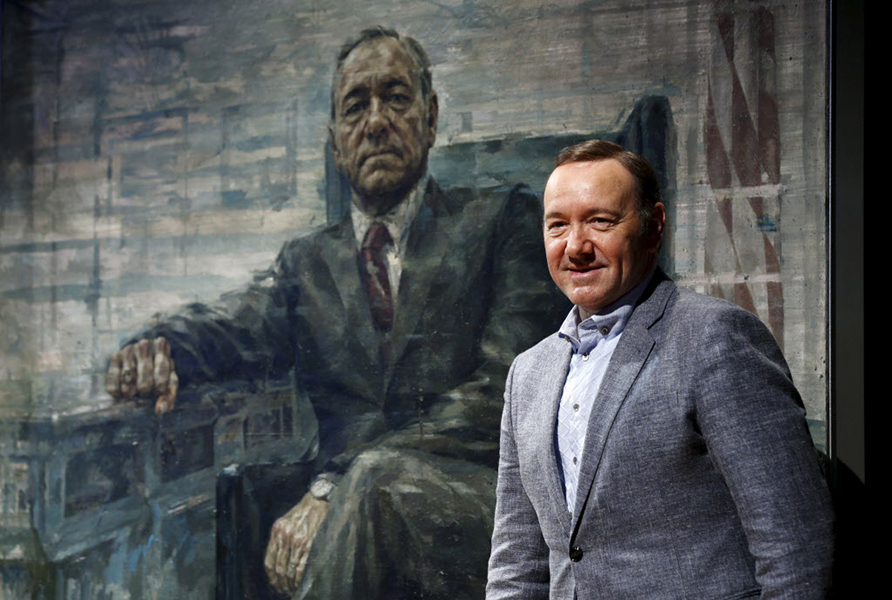'House of Cards': Season four and the show's unusual marketing strategy
Loading...
The Netflix drama “House of Cards” returns on March 4 for a fourth season and the promotion for the TV show is blurring the lines between the real world and the fictional political universe of the show.
Most recently, actor Kevin Spacey, who portrays “Cards” protagonist Frank Underwood, attended an event at the National Portrait Gallery, where a painting depicting Frank was revealed. The art piece is only there temporarily.
Mr. Spacey played his character, speaking in Frank’s trademark Southern accent and appearing with people who were presumably supposed to be Frank’s Secret Service agents.
Attendees included Valerie Jarrett, adviser to President Obama; Tina Tchen, chief of staff to Michelle Obama; and Lloyd Hand, who was former president Lyndon B. Johnson’s chief of protocol.
The event continues Netflix’s promotional strategy of inserting the fictional politician into the real world of Washington.
This plan was previously seen during a CNN debate between Republican presidential hopefuls in December, in which a commercial for “Cards” aired that was made as if it was a real campaign ad for Frank.
“It’s a new day in America,” an unseen narrator said during the ad. “Today, more people will go to work, return home to their families, and sleep more soundly than ever before.”
Spacey didn’t appear until the end of the ad, when he told the camera, “America, I’m only getting started.”
The recent event at the National Portrait Gallery and the portrait itself has struck some as unusual, with Deadline writer Ross A. Lincoln writing of the artwork, “[It] will be displayed – not a joke – in the Smithsonian Institute’s National Portrait Gallery” and Washington Post writer Emily Heil writing, “Okay, we all know that Frank Underwood isn’t actually the commander in chief, right?... A reality check may have been needed Monday night [when the event was held].”
It’s all part of the strategy to get viewers thinking about “Cards.” In this golden age of television, there is a huge amount of not only TV shows, but well-reviewed, acclaimed television. Those working on TV shows are trying to be heard above the noise.
It’s been a requirement for some time. “It's not enough to promote a new show during an older one,” Advertising Age writer Shareen Pathak wrote in 2013. “Audiences are splintered, rely on social recommendations, don't watch as much live, and often binge-watch full seasons in a single sitting, so marketing needs to be more collaborative and planned.”
Fox’s “Empire,” which launched in January 2015, was praised for its marketing campaign. Adweek writer Jason Lynch noted how those behind “Empire” had aimed certain aspects of the show at certain audiences.
“They played up the family drama and the music aspects, and they targeted the African-American and LGBT communities (one of the main characters is a gay singer), along with the fashion world,” Mr. Lynch wrote of marketing staff.
Another strategy? Don’t stop after the series premiere. Joe Earley, Fox’s chief operating officer, told Adweek, “We increased our spend for week two [after seeing premiere ratings]... We all absolutely, 100 percent believed [ratings for the second episode] would go down 20 percent because that's what new shows do.” Instead, ratings increased.








